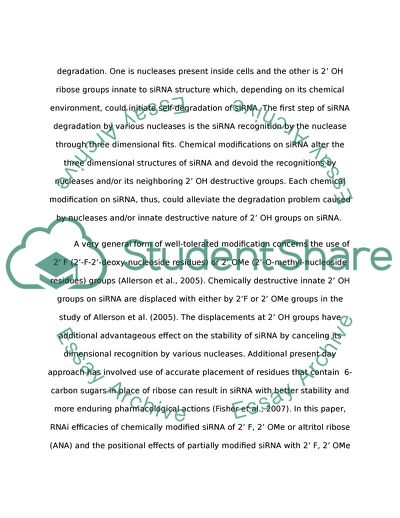Cite this document
(Chemically Modified siRNA Molecules Term Paper Example | Topics and Well Written Essays - 2000 words, n.d.)
Chemically Modified siRNA Molecules Term Paper Example | Topics and Well Written Essays - 2000 words. Retrieved from https://studentshare.org/chemistry/1744409-chemically-modified-sirna
Chemically Modified siRNA Molecules Term Paper Example | Topics and Well Written Essays - 2000 words. Retrieved from https://studentshare.org/chemistry/1744409-chemically-modified-sirna
(Chemically Modified SiRNA Molecules Term Paper Example | Topics and Well Written Essays - 2000 Words)
Chemically Modified SiRNA Molecules Term Paper Example | Topics and Well Written Essays - 2000 Words. https://studentshare.org/chemistry/1744409-chemically-modified-sirna.
Chemically Modified SiRNA Molecules Term Paper Example | Topics and Well Written Essays - 2000 Words. https://studentshare.org/chemistry/1744409-chemically-modified-sirna.
“Chemically Modified SiRNA Molecules Term Paper Example | Topics and Well Written Essays - 2000 Words”. https://studentshare.org/chemistry/1744409-chemically-modified-sirna.


